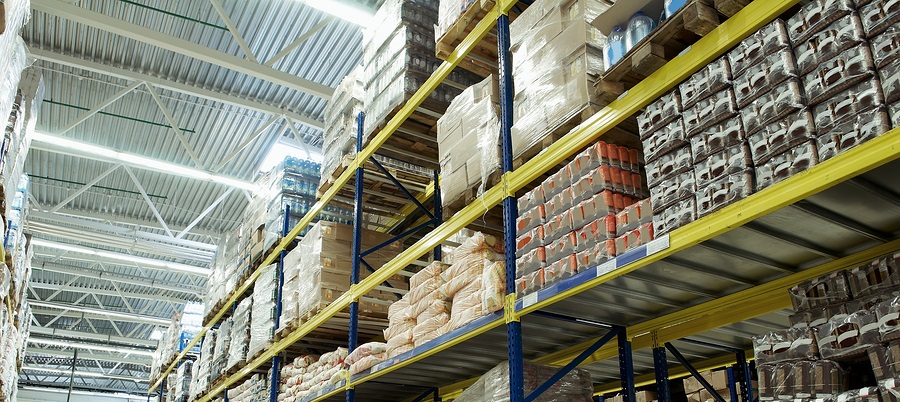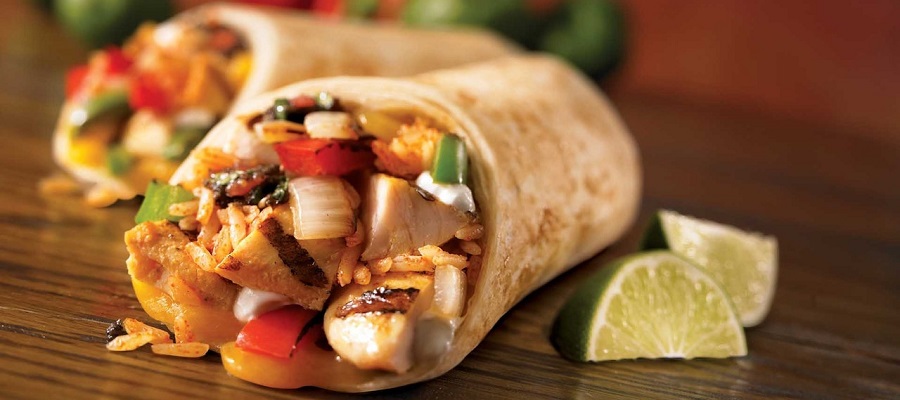Food warehousing is the storage and distribution of food products. This can include raw ingredients, packaged goods, and finished products. Food warehouses must adhere to strict regulations to ensure the safety and quality of the food being stored. This includes maintaining proper temperatures, preventing cross-contamination, and regularly inspecting products for spoilage or damage. Food warehouses also use inventory management systems to track the products they have in stock and to ensure efficient order fulfillment. Some food warehouses also have facilities for packaging and labeling products. Additionally, food warehouses are often equipped with specialized equipment such as refrigeration units and pallet jacks to handle and move the food products.
What are the regulations that food warehouses must comply with to ensure the safety and quality of stored products?
Food warehouses must comply with regulations set forth by government agencies such as the US Food and Drug Administration (FDA) and the US Department of Agriculture (USDA) to ensure the safety and quality of stored products. These regulations include the following:
-
The Current Good Manufacturing Practices (cGMPs) which outline the basic requirements for the design, monitoring, and control of manufacturing processes and facilities.
-
The Hazard Analysis and Critical Control Points (HACCP) system which is a food safety management system that identifies potential hazards and implements controls to prevent or minimize those hazards.
-
The Food Safety Modernization Act (FSMA) which aims to ensure the safety of food products by strengthening the regulation and oversight of food facilities.
-
The Sanitary Food Transportation Act (SFTA) which focuses on the safe transportation of food products.
-
The Food Allergen Labeling and Consumer Protection Act (FALCPA) which requires food manufacturers to clearly label products that contain major food allergens.
-
The Foreign Supplier Verification Programs (FSVP) which requires importers of food products to verify that their foreign suppliers are producing food that is safe and that the importer's own preventive controls are adequate.
-
The Produce Safety Rule (PSR) which establishes science-based standards for the growing, harvesting, packing, and holding of fruits and vegetables grown for human consumption.
These regulations are in place to ensure that food products are safe for consumption and that the warehouse facilities are clean and well-maintained.
How do food warehouses maintain proper temperature conditions to preserve the products?
Food warehouses maintain proper temperature conditions to preserve products by using a variety of methods, including:
-
Refrigeration: Foods that require cold storage are kept at a temperature between 32-40°F (0-4°C) in refrigerated warehouses. These warehouses use specialized refrigeration units, such as walk-in coolers and freezers, to control the temperature and humidity levels.
-
Temperature monitoring: Temperature monitoring devices are used to continuously monitor the temperature inside the warehouse to ensure that it stays within the required range. These devices can alert warehouse staff to any temperature fluctuations and allow them to take corrective action.
-
Insulation: Insulation is used to maintain temperature within the warehouse, specially in the walls, roof and floor.
-
Air conditioning: Air conditioning can be used to keep temperature and humidity level at a steady state.
-
Loading/unloading: Proper procedures are followed when loading and unloading products to ensure that the temperature inside the warehouse is not affected.
-
Product rotation: Proper product rotation is also important to ensure that older products are used before they expire.
-
Temperature Controlled Transportation: Some food warehouses also use temperature controlled transportation to move products between warehouses and to customers, to ensure that the temperature is maintained throughout the journey.
All these methods are used to preserve the quality of food products and to prevent spoilage or waste.
What measures are taken to prevent cross-contamination in food warehouses?
Measures that are taken to prevent cross-contamination in food warehouses include:
-
Segregation: different types of food products are stored in separate areas to prevent cross-contamination. This includes separating raw and cooked foods, as well as allergen-free products from those that contain allergens.
-
Cleaning and sanitation: regular cleaning and sanitation of the warehouse and equipment is essential to prevent cross-contamination. This includes using cleaning chemicals that are approved for use in food handling environments.
-
Pest control: food warehouses use various pest control methods to prevent the presence of pests, such as rodents and insects, that can spread disease and cross-contaminate products.
-
Personal hygiene: food warehouse employees are required to follow strict personal hygiene rules, such as hand washing and hair covering, to prevent the spread of bacteria and other contaminants.
-
Equipment and utensils: Food warehouses use dedicated equipment and utensils for different types of food products, and they are properly cleaned and sanitized before and after use.
-
Food packaging: Some food warehouses also use packaging that helps prevent cross-contamination, such as vacuum-sealed packaging or modified atmosphere packaging.
-
Staff training: Proper and regular training is provided to the staff on cross-contamination and food safety measures to ensure that they understand the importance of these measures and how to implement them correctly.
All these measures are taken to ensure that food products remain safe and free from contaminants and to prevent cross-contamination that may cause food-borne illnesses.
How are food products inspected for spoilage or damage in a warehouse?
Food products are inspected for spoilage or damage in a warehouse through a variety of methods, including:
-
Visual inspection: Food products are visually inspected for signs of spoilage or damage, such as discoloration, mold, or broken packaging.
-
Temperature monitoring: As mentioned before, temperature monitoring devices are used to continuously monitor the temperature inside the warehouse to ensure that it stays within the required range, and to identify if any products are stored in temperatures that may cause spoilage.
-
Inventory management: Inventory management systems are used to track the products that are stored in the warehouse, and to identify if any products are approaching their expiration date.
-
Random sampling: Random samples of food products are taken and tested for spoilage or damage.
-
Laboratory testing: Laboratory testing can be used to detect the presence of harmful bacteria or other contaminants in food products.
-
Product rotation: Proper product rotation is also important to ensure that older products are used before they expire, and to identify if any products have been stored for too long.
-
Staff training: Staff members are trained to identify signs of spoilage or damage and to take appropriate action, such as removing affected products from the warehouse.
All these methods are used to ensure that food products are safe for consumption, and to identify and remove any spoiled or damaged products before they can cause food-borne illnesses.
What is the difference between dry food warehousing and refrigerated food warehousing?
Dry food warehousing and refrigerated food warehousing are different types of food warehousing that are used to store different types of food products.
Dry food warehousing is used to store food products that do not require refrigeration, such as cereal, pasta, crackers, and other dry goods. These warehouses typically maintain a temperature between 60-70°F (15-21°C) and relative humidity between 30-50%.
Refrigerated food warehousing, on the other hand, is used to store food products that require refrigeration, such as meats, dairy products, fruits, and vegetables. These warehouses are equipped with specialized refrigeration units, such as walk-in coolers and freezers, to maintain a temperature between 32-40°F (0-4°C).
In addition to temperature and humidity control, the infrastructure and equipment used in dry and refrigerated warehouses are also different. Dry warehouses may have less insulation and may use a different type of flooring than refrigerated warehouses. Also, refrigerated warehouses have specialized equipment such as refrigeration units, temperature monitoring devices, and insulation that dry warehouses do not have.
Overall, the main difference between dry food warehousing and refrigerated food warehousing is the type of products stored and the temperature conditions required for their preservation.
How are food warehouses designed to maintain food safety and quality?
Food warehouses are designed to maintain food safety and quality by incorporating a number of features, such as:
-
Temperature control: Food warehouses are designed to maintain the appropriate temperature and humidity levels required for the preservation of the products stored. This includes insulation, air conditioning, and refrigeration units.
-
Lighting: Adequate lighting is provided to ensure that food products can be easily inspected for spoilage or damage.
-
Flooring: The flooring in food warehouses is designed to be easily cleaned and sanitized, and to prevent slips and falls.
-
Pest control: Food warehouses are designed to prevent the presence of pests, such as rodents and insects, that can spread disease and cross-contaminate products. This includes using sealed doors and windows, and proper drainage systems.
-
Air quality control: Food warehouses are designed to control the air quality, to prevent the spread of bacteria and other contaminants. This includes using filters, air purifiers, and ventilation systems.
-
Product flow: The design of the warehouse is optimized for efficient product flow, to reduce the risk of cross-contamination and to make it easy to rotate products and identify expired products.
-
Product separation: Food warehouses are designed to separate different types of food products, and to prevent cross-contamination, such as separating raw and cooked foods and allergen-free products from those that contain allergens.
-
Traceability: Food warehouses are designed to allow for easy traceability of products, such as labeling, barcode scanning, and computerized inventory systems.
All these features are implemented in the design of food warehouses to ensure that food products are safe for consumption, to prevent spoilage or waste, and to ensure that the warehouse facilities are clean and well-maintained.
What are some technologies used in food warehousing?
There are many technologies used in food warehousing, some of them are:
-
Inventory management systems: These systems are used to track the products that are stored in the warehouse, and to identify if any products are approaching their expiration date.
-
Temperature monitoring devices: These devices are used to continuously monitor the temperature inside the warehouse to ensure that it stays within the required range, and to alert warehouse staff to any temperature fluctuations.
-
Barcode scanning: Barcode scanning systems are used to track products as they enter and leave the warehouse, and to ensure that the correct products are shipped to customers.
-
Automated storage and retrieval systems: These systems are used to increase warehouse efficiency by automating the movement of products within the warehouse, reducing the need for manual labor.
-
Robotics: Robotics are being used to automate tasks such as product sorting, packing, and palletizing, which can improve efficiency and accuracy.
-
Cloud-based software: Cloud-based software is being used to manage inventory, track orders, and communicate with customers in real-time.
-
Internet of Things (IoT) devices: IoT devices are being used to monitor and control temperature, humidity, and other conditions in the warehouse in real-time, and to alert staff of any issues.
-
Artificial Intelligence (AI): AI is being used for forecasting inventory, predicting demand, and identifying patterns that can help improve warehouse operations.
All these technologies are used to improve the efficiency, accuracy, and safety of food warehousing operations. They can help to optimize the use of space, reduce labor costs, and improve the overall quality of the products stored.


